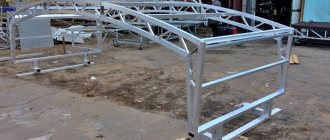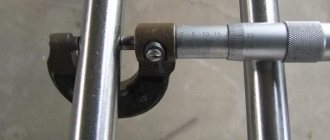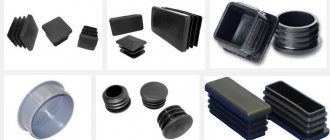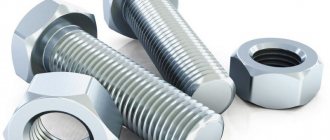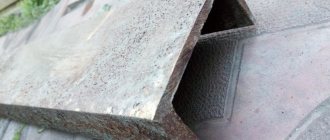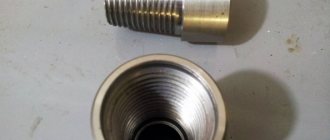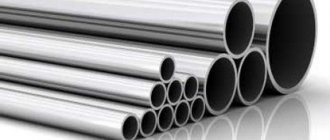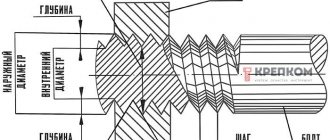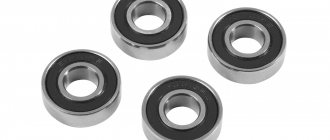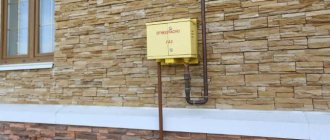home
About company
Directory
Stainless steel pipe
Rolled pipes made from high-alloy steels have unique performance characteristics: stainless steel pipes made of 12Х18Н10Т steel (one of the most common grades of stainless steel) can be used at temperatures from −196 to +600°С. In highly aggressive environments, the operating temperature for stainless pipes reaches + 350°C; in nitric, phosphoric, acetic acid, in solutions of salts and alkalis, the average annual corrosion rate is only 5-20 microns per year (µm/year). Such properties, combined with wear resistance (the tensile strength of steel 12Х18Н10Т is 510 MPa), make stainless pipes indispensable in the construction of industrial facilities, in aviation, mechanical and instrument making, petrochemical and chemical industries, pharmaceutical and food production.
Alloyed pipe products are distinguished by production method:
- cold and heat deformed stainless steel pipes GOCT 9940-81;
- hot-rolled stainless steel pipes GOCT 9941-81;
- electric welded pipes made of corrosion-resistant steel grades GOCT 11068-81.
Depending on the class, the scope of application of stainless steel pipes has distinctions: cold and heat-deformed pipes are distinguished by high manufacturing precision and a mirror (shiny) surface, due to which they are used for the production of furniture and interior decoration; hot-rolled steel is used for installation of process pipelines, equipment production, and construction; electric welded pipes are not intended for operation under conditions of high pressure (design working pressure up to 16 MPa), as a result of which they are not used for critical pipelines.
Diameters of stainless steel pipes - GOST and size table
Pipes made of stainless steel alloys are now actively used for the installation of heating, water supply and sewerage systems. By choosing the diameters of stainless steel pipes according to a special size table, you can successfully select such products to solve various problems.
For each type of stainless pipes there are maximum permissible deviations from the parameters defined by the relevant standards
All pipes for the production of which stainless steel is used are produced in strict accordance with the regulatory document. GOST stipulates not only the chemical composition of the material for their manufacture, but also their production technologies, sizes and assortment.
Advantages and disadvantages
The stainless steel from which the pipe is made has the following advantages:
- Resists rust well.
- Has high strength.
- Can be used for a long time.
- Heat resistant.
- It has an aesthetic appearance.
The disadvantage is the high price compared to products made of ferrous metals.
No seam plus or minus
Pipe products without a weld are considered more durable. But the technology for their production is much more complicated. For these reasons, seamless rolled steel is significantly more expensive than electric welded rolled steel.
Seamed pipes have their own advantages. For example, the range of their standard sizes during production is much wider.
Both rental products are actively used in certain situations, based on operating conditions. The use of electric welded pipes is justified in heat and water supply systems. In high-pressure pipelines, more durable and expensive seamless bends are used.
Classification options
The entire range of pipes made from stainless steel is divided into several categories. The parameters by which this division is carried out are:
- design features (suture and seamless);
- production technology (cold rolled, cold drawn and hot rolled);
- cross-sectional shape (round and profile);
- wall thickness (thick-walled and thin-walled).
Stainless steel pipes of various sizes are actively used for arranging communications through which cold and hot water is transported, as well as for installing sewer systems. Such pipes, which have a significant diameter, are successfully used for the installation of main oil and gas pipelines.
The ratio of outer to inner diameter for thick-walled stainless steel pipes is in the range of 0.05–0.1
The high popularity of rolled pipes made of stainless steel is explained by a whole list of its advantages:
- exceptional durability;
- possibility of operation under high pressure;
- resistance even to significant temperature changes;
- high plasticity;
- resistance to corrosion, demonstrated even during operation in conditions of constant exposure to aggressive environments.
It should also be noted that the minimum service life of stainless steel pipes is 10 years.
Classification of rolled pipes made of stainless metals
According to the shape of the internal section, they are distinguished:
- round,
- elliptical,
- square and rectangular.
Possible shapes of stainless steel profiles
Corrugated options are considered a separate class. They are characterized by special plasticity and the ability to undergo repeated cycles of compression and stretching in both longitudinal and transverse directions.
Main varieties
GOST also stipulates the range of stainless steel pipes, which includes the following products:
- used for transporting liquid and gas media – water and gas pipelines;
- coated with a special anti-corrosion compound;
- characterized by a slight wall thickness and having threads at the ends (such steel pipes, the diameters of which can be different, also have a reduced weight);
- produced using welding technologies and having longitudinal seams;
- seamless, made using hot-rolled technology.
It is worth dwelling in more detail on each type of stainless pipes, the range and diameters of which are specified by GOST.
The diameter of pipes of this type, as indicated by GOST, can vary within a fairly wide range: 15–50 mm. Depending on the pressure under which they are intended, such stainless steel pipes are divided into light, standard and reinforced.
Parameters of water and gas pipes
GOST stipulates that the ends of water and gas pipes must be cut at an angle of 90°, and the welds on their surface must be completely welded and sealed. In accordance with the standard, there may be minor chips on the surface of such steel pipes, but in general their walls should be smooth and free of cracks.
Pipes with anti-corrosion coating
Such pipes, which are also listed in the stainless steel product range, are distinguished by the fact that their surface is coated with zinc, which provides additional corrosion resistance. In accordance with the regulatory document, they should not have areas not coated with zinc, coating blisters, burrs and other defects.
The dimensions of the thread, if applied to the ends of such pipes, should not exceed 10 percent of the length of the product itself.
Thin-walled pipes with threads
These pipes, produced in various standard sizes, are used in cases where it is necessary to carry out repairs or change the design of the pipeline. Products of this type, which make it possible to obtain reliable and tight connections, are not thick-walled and are not produced with large cross-sectional dimensions.
Parameters of light series pipes manufactured for threading
There are no welds on the surface of hot-rolled pipes, which can be thick-walled, which gives such products high tightness and allows them to withstand even very significant pressure. These products, the standard sizes of which are also specified in the assortment, are distinguished by smooth walls and a minimal coefficient of thermal expansion.
The most common areas of application for such pipes, the sizes of which can vary quite widely, are:
- installation of pipelines for supplying cold and hot water;
- arrangement of sewer systems;
- installation of heating networks and communications for other purposes.
Dimensions of seamless hot-formed stainless steel pipes
It should be borne in mind that both thin-walled and thick-walled pipe products produced by welding can be used to supply water used for technical purposes, and not for drinking or cooking.
Classification of rolled pipes made of stainless metals
According to the shape of the internal section, they are distinguished:
- round,
- elliptical,
- square and rectangular.
Possible shapes of stainless steel profiles
Corrugated options are considered a separate class. They are characterized by special plasticity and the ability to undergo repeated cycles of compression and stretching in both longitudinal and transverse directions.
With different methods of manufacturing from stainless steel, the presence or absence of a seam on the finished product may differ. According to this parameter, pipes are distinguished:
Seamless technology
The production of solid profiles is carried out without the use of welding, by rolling on special blanks. Such products have increased tensile strength and are able to withstand significant loads. Therefore, they are used on pipelines with high pressure or where special reliability is required.
The manufacturing method without seam formation leads to an increase in the cost of the output product. It is not profitable to use these products in the domestic sphere.
The production and standard sizes of seamless stainless steel pipes are regulated by GOSTs 9940-81 and 9941-81.
Straight seam welding
The blanks for this technology are steel sheets. They are bent on special presses into a circle of the required diameter. The edges of the sheets at the joint are welded together to form a seam running along the entire length.
Stainless steel pipes with straight seam
Welding methods can be different, but the main one is electric welding.
The parameters and requirements for the production of longitudinally welded stainless steel pipes are set out in GOST 11068-81.
Spiral stitch technology
The production is also based on welding of curved steel sheet. But the joining of the edges does not proceed in a straight line, but in a spiral covering the entire length.
Spiral seam welded pipe
Such a seam is considered more durable because it eliminates the formation of longitudinal cracks. But its total length is greater than in the straight-seam version. This also leads to increased welding costs.
The production of spiral welded pipes is regulated by GOST 8696-74.
Heating level
According to the methods of temperature treatment in the manufacture of stainless steel products, there are:
- Cold-formed method. Manufactured without the use of heat. If necessary, heat treatment of the finished product is carried out.
- Heat deformed. When forming the profile, the workpiece is subjected to slight heating.
- Hot-formed. The pipe is formed from steel heated to a red-hot state.
The cold method is more complex, but gives the finished products greater strength. Therefore, cold-formed pipes are produced with thinner walls than those manufactured using hot technology.
The differences between the standards regulating the production of seamless pipes lie precisely in the temperature conditions during production. GOST 9940-81 is intended for the hot-deformed method, and GOST 9941-81 is intended for cold- and heat-deformed production.
Wall thickness
In addition to this value itself, there is an indicator showing the ratio of diameter to wall thickness. The larger it is, the thinner the product is considered. This parameter is designated SDR.
The following categories are distinguished:
- especially thin-walled – SDR > 40;
- thin-walled – SDR = 13 – 40;
- thick-walled – SDR = 6 – 13;
- extra thick-walled – SDR
Thin-walled pipes
Appearance
Depending on the additional surface treatment after manufacturing, three types of pipes are distinguished:
- Matte. Only irregularities and burrs are removed.
- Polished. The material undergoes only initial grinding using fine-grained abrasives.
- Polished (mirror). Finishing the surface after grinding to final shine. There are methods of mechanical, chemical and electrolytic polishing.
Polished stainless surfaces
Standard sizes
The list of standard sizes of stainless pipe products includes the following parameters:
- nominal diameter - internal diameter, which can vary between 10–150 mm (the larger this parameter, the higher the permeability of the pipes);
- thread sizes (in accordance with the requirements of the standard, this parameter can vary in the range of 3/8–6 inches);
- outer diameter, which, taking into account the size of the weld, can vary in the range of 17–156 mm;
- The outer diameter of steel pipes, which are made without the use of welded joints, is 16–159 mm.
Main dimensions of stainless pipes
Stainless steel pipes, depending on their type, are produced in accordance with the requirements of various regulatory documents:
- GOST number 3262-75 – water and gas pipelines;
- 10705-80 – obtained by welding;
- 20295-85 – intended for laying main pipelines.
Each of the above regulatory documents contains tables that indicate the range and standard sizes of such products.
Where can I buy
It is safer and cheaper to buy goods from manufacturers directly. Among the most well-known and proven companies are:
- TMK is a Pipe Metallurgical Company, the leader in the country in terms of production volume.
- OMK is the United Metallurgical Company, specializing in the production of large-section pipes.
- ChTPZ is an association of metallurgical plants. Produces all types of seamless pipe products, including stainless steel.
- Sinarsky Pipe Plant, which supplies pipe products from the most popular brands.
These enterprises sell their products both directly and through their dealers. Purchasing a product here guarantees that you will receive a quality product in accordance with the stated characteristics.
Brief overview of the most popular types
Almost 70 percent of stainless products are seamless pipe products made from 10Х17Н13М2Т alloy. Its constituent nickel, titanium, chromium, and molybdenum provide the rolled product with anti-corrosion properties, ductility and strength. Products from this brand are in demand in medical institutions, chemical and food industries.
Pipes made of alloy 12Х18Н10Т are distinguished by their resistance to rust and durability. They are used for transporting drinking and process water, both outside and indoors.
For work in aggressive environments, products 06ХН28МДТ are used. They are in demand at metallurgical plants and petrochemical plants.
In combustion chambers, furnace equipment units, and high-temperature pipelines, the best solution would be to use grades 20Х23Н18 and 10Х23Н18.
Brands and guaranteed parameters
The tables contained in the regulatory documents for pipe products made from stainless steel contain various parameters. In particular, from these tables you can take information about the grades of steel used for the production of such pipes.
Permissible deviations from dimensions must be within the values specified in the table
Knowing the brand of material from which the pipe is made allows you to get an idea of which of its parameters are guaranteed. These include in particular:
- A – mechanical characteristics of the steel used;
- B – its chemical composition;
- B – the relationship between the chemical composition and mechanical properties of the alloy used.
Types of pipes by production method
The following methods of pipeline production are distinguished: hot-deformed, cold-deformed, electric welded. The dimensions and maximum differences of products, production materials are regulated by assortments for round iron pipes, different assortments for each production method:
Hot-deformed seamless iron pipes GOST 8732
The production of pipes takes place in three steps. First, a hole is pierced in a round billet heated to 900-1200 degrees on special machines, and as a result a sleeve comes out. Next, the liner is rolled into a preliminary pipe, and the final step is calibration, rolling with final dimensions in thickness and diameter.
Interesting read: Soldering stainless steel with tin at home
The dimensions of the resulting products using this production method can be: external diameter 16-630 mm, wall thickness 1.5-50 mm. Product blanks are divided into several groups, depending on the production material used:
- A – the mechanical characteristics of the product are standardized.
- B – the chemical composition is regulated during manufacture.
- B – mechanical characteristics and chemical composition are immediately regulated;
- D – the chemical composition is standardized and the mechanical characteristics are checked on experimental samples;
- D – the value of the test pressure during testing is regulated.
Seamless iron pipes, cold deformed according to GOST 8734
Round iron blanks are used for rolling. The workpiece is heated in special furnaces to the temperature at which crystallization begins to obtain the required plasticity. Then it is stitched and goes into a rolling mill, where the preliminary dimensions of the product are formed using rollers. The final operation is calibration and cutting to a certain length.
Unlike hot-deformed pipes, cold-deformed pipes receive additional heat treatment during calibration, which makes such products stable and long-lasting.
Cold-formed products are divided into the following groups, where the main aspect is the ratio of the diameter D to the wall size S:
- Extra-thin-walled, with a D/S ratio greater than 40. If size D=20 mm or less, size S=0.5 mm or less.
- Thin-walled, with a D/S ratio of 12.5 and less than 40. In addition, pipes with D = 20 mm. and less, with S=1.5 mm, and less.
- Thick-walled, with a D/S ratio from 6 to 12.5.
- Extra thick-walled with a D/S ratio of less than 6.
Thin-walled and extra-thin-walled pipes are used in various hydraulic systems, auto engines, industrial refrigeration units, as well as in the honey and food industries. The main application of thick-walled pipes is in the oil and gas industry.
Thin-walled cold-rolled products
Electric-welded iron pipes according to GOST 10704
Production development contains several steps that are combined into one continuous process:
- Sheet cutting. It is produced on high-precision machines and allows you to obtain workpieces of similar sizes.
- To obtain an endless strip, the strips are welded together, having previously been passed through a system of rollers to eliminate surface imperfections.
- The resulting workpiece is passed through a system of horizontal and vertical rollers, with the help of which the product is formed.
- Welding of edges is done using frequency welding. The edges of the workpiece are heated by an inductor to the melting temperature, and then compressed by crimping rollers. Another method, when the edges are heated using a frequency generator, current is supplied to the edges using contacts.
Electric-welded pipelines are widely used when laying utility networks that can withstand enormous overloads and pressures. Products with a diameter of 1200 mm. are used in the installation of almost all main gas and oil pipelines.
Diameters of stainless steel pipes: GOST and OST
The diameters of stainless steel pipes can be found in State and Industry standards. They can be very different, ranging from small ones of a few millimeters to large ones (several meters). Stainless steel pipes are used in a wide variety of sectors of the national economy and industry, which is why the range in size is so huge.
If you require a specific size, we recommend that you first refer to the regulatory documentation. Here is a list of basic standards that can serve as references when finding the required diameter:
GOST 14162-79. Small steel tubes (capillary) - determines the technical conditions for manufacturing and the range of capillary tubes made of stainless steel. The sizes of these products are very small.
The main properties of round pipes
The main parameter by which the preparatory selection of pipes for implementation is carried out is the diameter. In the assortments for round pipes, the following types of diameters are distinguished:
- The external diameter is the main size in determining the ability of a product to be used in various areas of industry and everyday life.
- The internal diameter characterizes the throughput of the pipeline. The nature of the flow and loss of pressure when water moves depends on the size of this size.
- Conditional diameter. This size characterizes the approximate capacity of the pipes and may be similar for different sizes. For example, for standard sizes 45x2.5 and 43x1.5, the nominal diameter is DN=40.
- Nominal diameter. Calculated value when selecting the required parameter.
Availability in GOST is not a guarantee...
We want to clarify right away. As you can see, the number of different sizes in these standards is very large, but the number of factories that manufacture pipes is not so huge. In addition, any plant, first of all, cares about the economic efficiency of its production and tries to produce popular types of rolled metal.
Obviously, if the plant has all the above pipes in its assortment, it will be forced to curtail production. This will happen because a huge part of the produced goods will remain in warehouses unclaimed. In the real sector, only a limited number of diameters are used. And this can cause certain difficulties when searching.
Therefore, the presence of a size in the State or industry standard does not at all mean that it is available from suppliers. A size may be indicated in GOST but not be available on the market at all due to lack of demand.
The opposite is also true: the absence of a size in the standards does not mean that it is not on the market. The standards do not prohibit the production of pipes of intermediate diameters and thicknesses. Manufacturers often make such pipes because there is a demand for them and it is profitable.
Therefore, we want to give you one piece of advice: do not focus on standards when searching. Focus on the market itself and the capabilities of a specific supplier.
Socket connection
To connect sewer and water lines, a socket connection is used. To do this, a special expansion is made at the ends of the pipes, into which the other end is inserted. Connection density is ensured by different methods:
- Sealing with cement. This method is used when connecting sewer systems. First, the gap is sealed using tow, and then cement mortar is poured.
The bell joint provides a reliable connection, but in some cases a so-called additional seal is installed, especially for metal sewer systems.
Non-standard diameters
Some sizes are much easier and cheaper to find on the market than others. For example, pipes with a diameter of 10, 20, 50, 100 mm are very easy to find. They are available from many suppliers. But if you're looking for a custom-sized stainless pipe, you may run into problems. It all depends on the demand and method of production of rolled products .
Hot-deformed and cold-deformed pipes of non-standard and unpopular sizes are much more difficult to find than electric-welded ones, since hot rolling technology requires special expensive equipment. Electric-welded pipes are much easier to produce, and therefore, even if you do not find the required size, it can always be made to order.
Making a batch to order can be a good solution if the required batch is quite large. However, this still involves additional difficulties: it is necessary to negotiate with the manufacturer and approve documents.
Therefore, we recommend that you avoid unpopular sizes where possible. This will save you from a lot of difficulties in the future. Well, if this fails, call our company. We will always help you.
To summarize we can say:
- Industry standards do not indicate all possible sizes of rolled products. What is specified in the standards and what is on the market are completely different assortments.
- The availability of a specific diameter on the market depends on many factors and, above all, demand.
- Custom electric-welded pipes are much easier to find than hot-rolled or cold-rolled pipes.
- If you can refuse to use unpopular diameters in your project in favor of more popular ones, then it is best to do so. This will save you a lot of time and money.
- If you still really need a non-standard or unpopular size, please contact us. We have extensive connections with manufacturers and other suppliers. We will try to help you in every way we can.
METAL TENDER
– metal trading system for buyers and sellers. All information on the site is for informational purposes only. For accurate data, please refer to the relevant GOST.
Our website uses cookies to improve your experience on the site. When you visit this website, you consent to the use of cookies in accordance with this cookie notice.
Add rolled metal to your request
The more detailed you fill out this form, the fewer additional questions our specialists will have and the easier it will be to find the required rolled metal.
Loss of water pressure when moving in round pipes
When transporting liquids in pipelines, pressure losses occur, which depend on the following reasons:
- roughness of the internal surfaces of the pipe,
- losses during passage of cross-sectional narrowings in taps, adapters and other fittings,
- losses during sharp 90-degree turns of the pipeline,
- In addition, pressure loss depends on the viscosity of the water.
There are two modes of water flow: laminar and turbulent. Laminar is when the movement of water in pipelines occurs without mixing particles. With turbulence, there is abundant mixing and rotational movement of water particles. The flow transition from laminar to turbulent occurs when the Reynolds number Re>2300.
Laminar and turbulent flow
The Reynolds number depends on the flow speed, internal diameter and viscosity of water and characterizes the mode of movement of water. When calculating the characteristics of pipelines, it is necessary that the calculated Reynolds number be Re<2300. At the same time, there is less loss and cost of pump power for water movement.
Stainless steel pipes
| Seamless cold- and heat-deformed stainless steel pipes |
Stainless steel pipes
used in the chemical, petrochemical and pharmaceutical industries and are designed for transporting corrosive media.
Stainless steel pipes
are made by hot pressing from hard-to-deform corrosion-resistant, heat-resistant and heat-resistant steels and alloys.
Stainless steel pipes
supplied in length:
Stainless steel pipes
in a batch of unmeasured length, 5% of pipes not shorter than 0.5 m are allowed. Pipes are supplied in a heat-treated state.
Stainless steel pipes
made from corrosion-resistant steels, the chemical composition of which must comply with GOST 5632-72:
Stainless steel pipe range
unmeasured length from 1.5 to 9 m;
| ||||
hot pressing in combination with subsequent etching ensures high surface quality (roughness Ra - 1.1-1.6 microns).
| ||||
| Outer diameter, mm | Wall thickness, mm | Pipe length, m (no more) | ||
| 5 | 0,2-1,0 | 5-7 | ||
| 6-7 | 0,2-1,5 | 5-12 | ||
| 8-9 | 0,2-2,0 | 5-12 | ||
| 10-13 | 0,2-2,5 | 5-12 | ||
| 14-17 | 0,2-3,0 | 5-12 | ||
| 18-19 | 0,2-3,5 | 5-12 | ||
| 20 | 0,2-4,0 | 5-12 | ||
| 21-24 | 0,3-4,0 | 6-12 | ||
| 25/27/28 | 0,3-4,5 | 6-12 | ||
| 30/32-35 | 0,3-5,5 | 6-12 | ||
| 36 | 0,4-5,5 | 6-12 | ||
| 38/40/42/45 | 0,4-6,0 | 6-12 | ||
| 48/50 | 0,4-7,5 | 6-12 | ||
| 51/53/54/56/57 | 0,5-7,5 | 6-7 | ||
| 60 | 0,5-8,0 | 6-7 | ||
| 63/65/68/70/73/75 | 1,5-8,5 | 7 | ||
| 76/80/83/85 | 3,0-8,5 | 7 | ||
| 89/90 | 4,0-8,5 | 7 | ||
| 95 | 4,0-5,0 | 7 | ||
| 108-530 | 4,0-28,0 | on request |
Seamless hot-deformed pipes made of corrosion-resistant steel
Assortment
| Outer diameter, mm | Wall thickness, mm | Length of measuring pipes, m (no more) |
| 76 | 4,5-10,0 | 7-6 |
| 83/89 | 4,0-12,0 | 7-4 |
| 95 | 5,0-12,0 | 7-4 |
| 102/108 | 5,0-12,0 | 7-5 |
| 114 | 5,0-12,0 | 7-3 |
| 121/127 | 5,0-26,0 | 7-3 |
| 133/140 | 5,0-26,0 | 7-3 |
| 146/152/159 | 8,0-26,0 | 8,5-3 |
| 168 | 7,0-25,0 | 8-3 |
| 180 | 8,0-28,0 | 8-3,5 |
| 194 | 9,0-28,0 | 8-3,5 |
| 219 | 10,0-28,0 | 8-3,5 |
| 245 | 11,0-25,0 | 8-4,5 |
| 273 | 11,0-20,0 | 8-4,5 |
| 325 | 11,0-20,0 | 6,5-5 |
Electric-welded pipes made of corrosion-resistant steel
Determining the weight of a linear meter
For large quantities of pipe products, prices are indicated by weight - per ton. This is more convenient because the range of pipes is reduced. The price of metal of the same quality does not depend on the diameter and wall thickness. Only in retail trade and for household use, the cost is calculated based on the length in meters.
To recalculate prices, you need to know the weight of 1 linear meter of pipe with the required characteristics. Required data for calculations:
- material density,
- diameter (and for rectangular sections - length and width)
- wall thickness.
For plumbing products, diameter is often indicated in inches. The correspondence is approximately as follows:
- 1/2 inch = 15 mm
- 3/4 = 20 mm
- 1 inch = 25 mm
The specific densities of the most common steel grades are shown in the table in the figure:
Density table
It turns out that the difference between the minimum and maximum values does not exceed 3%. Therefore, an accurate density value is only required when calculating for large batches. For ordinary calculations, it is enough to substitute the average number - 7850 kg/m3.
The weight of a linear meter of a round stainless steel pipe is calculated using the formula P = S*h*T, where:
- S – surface area = 3.142 * outer diameter of the pipe;
- h – wall thickness;
- T – specific density.
The weight of 1 meter of rectangular and square profiles is determined even more simply. The perimeter of the section (twice the sum of the width and height) is multiplied by the wall thickness and the specific density.
Diameters and walls of stainless steel pipes size table. Part 1.
Source: https://znatoktepla.ru/truby/obzor-harakteristik-nerzhaveyushhih-trub.html
Stainless steel seamless pipes
This type of metal products includes seamless hot-deformed pipes made of corrosion-resistant steel for general purpose, manufactured according to the outer diameter and wall thickness in accordance with GOST 9940-81 and seamless cold and heat-deformed pipes made of corrosion-resistant steel for general purpose, manufactured according to the outer diameter and wall thickness in accordance with GOST 9941-81.
Hot-deformed stainless steel pipes
The range of pipes corresponds to GOST 9940-81.
According to the length of the pipe they are made:
unmeasured length - from 1.5 to 10 m;
measured length - within the unmeasured range, with a maximum length deviation of +15mm;
multiple measured lengths - within the measured length with an allowance for each cut of 5 mm and with a maximum deviation along the entire length of +15 mm. Minimum multiple length 300mm;
limited length - within the specified length with a maximum deviation along the length of ± 500 mm.
Stainless steel hot-deformed pipes are made from steel grades whose chemical composition complies with GOST 5632, with microadditives of rare earth metals.
The sulfur content in steel intended for the manufacture of pipes to be welded should not exceed 0.02%.
Stainless steel seamless pipes are manufactured either heat-treated or without heat treatment.
Cold-deformed and heat-deformed pipes
The range of pipes corresponds to GOST 9941-81.
According to the length of the pipe they are made:
with a wall thickness of up to 0.5 mm - from 0.75 to 7 m;
with a wall thickness from 0.5 to 1.0 mm - from 1.0 to 7 m;
with a wall thickness of 1.0 mm or more - from 1.5 to 12.5 m.
measured length - within the unmeasured range, with a maximum length deviation of +15mm;
length, a multiple of the measured length - within the measured length with an allowance for each cut of 5 mm and with a maximum deviation along the entire length of +15 mm. Minimum multiple length 300mm.
Pipes are made from steel grades whose chemical composition complies with GOST 5632 PDF. It is allowed to manufacture pipes with microadditives of rare earth metals.
Pipes are manufactured heat-treated.
Stainless steel electric welded pipes
This group of metal products includes electric-welded pipes made of corrosion-resistant steels, intended for the manufacture of pipelines and various structures, manufactured in accordance with GOST 11068-81.
The range of pipes corresponds to GOST 11068-81.
According to the length of the pipe, the following should be made:
measured length - from 5 to 9 m;
measured length with a remainder of no more than 10% (by weight) of pipes of unmeasured length;
multiple measured lengths - up to 9 m and with an allowance for each cut of 5 mm, which is included in each multiple length;
multiple lengths with a remainder of no more than 10% (by weight) of pipes of unmeasured length;
of unmeasured length - from 1.5 to 9 m.
Maximum deviations along the length of pipes of measured and multiple lengths should not exceed +15 mm.
The theoretical mass of 1 m of pipe (m), kg, is calculated using the formula:
M= psng(Dn-sn)/1000, where
Dn is the nominal outer diameter of the pipe;
Sn—nominal pipe wall thickness, mm;
g - metal density, g/cm 3, depending on the steel grade.
08Х18Н10Т, 10Х18Н10Т, 12Х18Н10Т, 03Х18Н10Т, 08Х18Н10 - 7.9;
10Х17Н13М2Т, 10Х17Н13М3Т, 03Х17Н113М2Т, 03Х17Н14М3 - 8.0;
04Х17Т, 08Х18Т1 - 7.72.
Pipes are made from steel grades 10Х18Н10Т and 04Х17Т with a chemical composition in accordance with GOST 11068-81 PDF and steel grades 08Х18Н10Т, 08Х18Т1, 08Х18Н10, 12Х18Н10Т, 10Х17Н13М2Т, 10Х17Н13М3Т, 08Х22Н6Т , 08Х21Н6М2Т, 06ХН28МДТ, 08Х17Н13М2Т, 03Х17Н14М3, 03Х18Н10Т with chemical composition according to GOST 5632 - 72 PDF.
Pipes made of steel grades 08Х18Н10Т, 10Х18Н10Т, 12Х18Н10Т, 04Х17Т are manufactured heat-treated with mechanical properties in accordance with GOST 11068-81 PDF.
Standards: ASTM A554-13 PDF DIN 10217-7 PDF DIN 11850
Source: https://mc.ru/gost/truba_nerz
General characteristics of stainless steel pipes
Stainless steel pipe is a hollow and straight profile of different sections. Taking into account the cross-sectional shape, profile and round products . Today, stainless steel pipes are manufactured using one of three methods. The first involves the manufacture of products by rolling up a strip with further soldering of the joint with copper. The result is a soldered, rolled stainless steel pipe.
Seamless pipe rolling is produced using centrifugal casting or cold or hot deformation. In this case, the production of welded pipes occurs using plasma or laser electric welding. During this, the stainless steel is exposed to inert gases or high-frequency currents. This method makes it possible to make the cheapest products, since the manufacturing process does not take much time. In each case, the stainless steel is pre-hardened. This is required so that the raw material loses a high level of hardness and strength during manufacturing.
Advantages of stainless pipes
Stainless steel pipes have many advantages. The main thing is that a stainless product has increased resistance to corrosion . And since it contains 20% chromium, it also provides excellent resistance to most negative environmental factors. Due to this, such rolled metal has an almost unlimited operating time. It can be used for more than 400 years.
Stainless steel products can easily be restored to their aesthetic appearance, since steel is a homogeneous composition. The resulting scuffs and scratches can be easily polished and sanded, giving these pieces an attractive finish. This pipe product combines perfectly with modern finishing materials. The price of rolled pipes is relatively inexpensive, and the range has been very wide for many years.
How are they produced?
Profile pipes are made from stainless steel using two technologies:
- The finished product is formed from a blank in the form of a metal strip (strip).
- A round pipe is profiled.
Strip manufacturing technology
The method makes it possible to obtain a profile pipe made of stainless steel with a seam. Welding of sheet steel strips is carried out using high-frequency electric welding, laser or plasma welding in a conventional environment, as well as tungsten electrodes in inert gas (TIG welding). The production process itself is as follows:
- The strip is cut from stainless steel sheets on special rolling mills and fed into a sheet bending mill.
- The metal strip is formed on the rollers of a sheet bending mill into a round blank with open edges.
- The edges are welded using one of the selected types of welding. Excess metal (grant) is removed with cutters.
- The workpiece is calibrated on rollers to a given profile shape.
- The finished product is cut into pieces of the required length.
To relieve internal stress, the stainless steel profile pipe is subjected to heat treatment (annealing). The workpiece is heated to +550…650 °C for 60–90 minutes, followed by gradual cooling (tempering). As a result, it becomes stronger and more durable.
Profiling
This technology for the production of profile stainless pipes involves the use of seamless cold- and heat-deformed pipes of round cross-section as initial blanks. They acquire the desired profile shape when passing through calibrating rollers in a cold or heated state.
Next, the cold-deformed profile pipe is subjected to heat treatment. At the last stage, the rolled metal is cut into pieces and undergoes surface quality control, tensile tests, and geometric dimensions testing.
Popular range of stainless steel pipes
Stainless steel pipes according to GOST-9941 81
This standard, certified in the mid-1980s, describes seamless cold- and heat-deformed tubular products made from general purpose corrosion-resistant steel. The diameter (outer) of these pipes varies from 5 to 273 mm , their walls have a thickness of 0.20-21 mm.
Pipe rolling products are manufactured in standard (5-7 meters), as well as multiple measured and unmeasured lengths. The standard is quite loyal to consumer demands for corrosion-resistant products, therefore it allows their production with a length of 0.5-15 m. However, the production of all non-standard pipe products by the plant must be previously agreed with the customer.
It must be said that in one batch of manufactured products of unmeasured length there may be pipes:
- 0.5-0.75 meters (walls less than 0.5 millimeters);
- 0.75-1.0 meters (walls 0.50-1.0 millimeters);
- 0.75-1.5 meters (when their wall is specified as thicker than 1 millimeter).
In a batch of rolled pipes with these dimensions there can be no more than 6%. All corrosion-resistant pipes are divided into high-, normal- and high-precision products. Taking into account this indicator, the following deviations (maximum) of pipe products in wall thickness are permissible:
- 0.05-0.15 millimeters (usual accuracy);
- 0.03-0.10 millimeters and from -11% to +12.4% (increased accuracy);
- from -11% to +12.4% (high precision products).
The outer diameter of the pipes can have a permissible error from 0.15 millimeters (high-precision) to 0.4 millimeters (regular) or 0.7-1.3%. For pipes made of steel 06ХН28 MDT with a cross-section of more than 30 millimeters, a deviation of 1.2% is possible, a cross-section of less than 30 millimeters is 0.45 mm.
Requirements for cold- and heat-deformed stainless pipes
The ends of the finished pipeline are cut off (cut angle is straight), burrs are removed from them, which can lead to the formation of a chamfer and the formation of surface roughness. This is allowed by regulatory documents. Sometimes even customers negotiate with the manufacturer the need for chamfering at the ends of pipe products where the walls are more than 5 mm , since it makes it possible to make pipeline connections using welding more efficiently and effectively.
On any section 1 meter long, a stainless pipe can have the following curvature characteristics:
- 1 millimeter (walls more than 0.50 millimeters, cross-section more than 5 millimeters);
- 2 millimeters (pipes with walls up to 0.50 millimeters and a cross-section from 15 millimeters).
If we consider structures with walls less than 0.50 cm with a cross-section up to 1.5 cm, then there is no special approval in GOST for this case. The main thing is that the products are made without sharp bends. The ovality of rolled pipe should be such that the diameter of the products does not exceed the permissible errors in the size of their outer diameter.
The described products are manufactured from stainless metal from the following steel grades : 17Х18Н9, 08ХН28МДТ, 08Х17 Н15М3Т, 12Х18 Н12Т, 10Х23 Н18, 08Х18 Н10Т, 04Х18 Н10, 10Х17 Н13М2Т, 08Х13, 12Х17, 12Х18 Н10, 08Х22 Н6Т, 12Х13, 15Х25 Т, and some other high-alloy metals. The density level of these alloys ranges from 7.6-7.97 g/cm. cubic meters, regarding tensile strength – 37-587 kgf/mm. sq. and elongation – 16-46%.
These steel grades may include a small addition of rare earth metals, and at the same time comply with all 5632 standards. Much attention is paid to the presence of sulfur in products; it cannot be more than 0.02%. The finished pipe product undergoes heat treatment.
Stainless steel pipes according to GOST-9940 81
The next GOST also describes stainless steel pipes, but here we are talking about products that are manufactured using hot deformation. The outer diameter of these products is 56-326 millimeters, the wall thickness is 3.4-32 millimeters , they are made from the same grades of steel that are described in GOST 9941.
In many respects, both standards are absolutely identical. Therefore, we will not repeat ourselves, but will talk about the acceptance of finished products. It occurs in batches (they are assembled from identical geometric dimensions, grades of the original alloy, and heat treatment of products). No more than 200 products can be assembled into one batch.
Product quality control involves testing for:
- stretching (two pipes);
- flattening and spreading (one);
- intergranular corrosion (two products from the batch).
A batch is of high quality when all tests have shown positive results. If at least one shows poor quality of the products, then another test is performed, but now they use a double number of products. It should be noted that absolutely all products from the batch are subject to analysis of geometric characteristics, hydraulic pressure tests and ultrasonic examinations.
The quality of corrosion-resistant pipes is checked in the following ways:
- micrometer and staples (sheet) - external section and ovality;
- tape measure - their size in length (GOST-7502);
- using a straight edge and a feeler gauge – curvature.
During testing, stainless steel pipes are held under pressure for 10 seconds or more, tensile analysis is carried out according to GOST-10006/19040, and flattening is analyzed according to GOST-8695.
Installation Tips
When assembling metal structures from stainless steel profile pipes, the parts are connected by welding or fastening with clamps. The elements can be fixed using electric arc, gas or resistance welding.
When arc welding, it is important to choose the right electrode. The quality of the weld depends on its diameter. If it is too thin, the welding process will be interrupted; if the electrode cross-section is too large, a thin-walled pipe can be burned.
Electric arc welding should not be performed in open areas. Such work is carried out in special premises. In this case, the ends of the parts to be welded must first be cleaned and degreased.
The contact type of welding forms a welding seam of increased reliability. There are no restrictions on ambient temperature and other weather conditions for its use.
General recommendations for carrying out any type of welding are as follows:
- When choosing a welding temperature, you should proceed from the thickness of the metal, since profile products are more susceptible to deformation than round ones.
- To maintain the internal clearance of the profile, it is necessary to prevent molten metal from entering the stainless steel profile pipe.
- When performing welding, it is necessary to carefully check the geometric coincidence of the ends of the parts being welded so that distortions do not occur in the metal structure.
Alternative to profile pipes
The use of profile stainless pipes is not always technically and economically feasible. It's not cheap. In addition, it cannot be used for laying pipelines transporting liquid and gaseous media under high pressure. This is especially true for electric-welded products with a seam: due to the presence of different angles inside such pipelines, blockages can quickly form at the bends. For the installation of such communications, only round pipes are used. And it doesn't have to be stainless steel.
Modern pipe products made of reinforced polypropylene are not inferior in a number of technical characteristics to stainless steel, but are much cheaper. Profiles made of plastic are more often used as ventilation ducts. They are available in white, so they fit more harmoniously into the interior of kitchens and bathrooms.
An alternative option for constructing a chimney could be a galvanized sandwich pipe. Galvanized steel is just as fire-resistant and fireproof as stainless steel, but is less resistant to corrosion from condensation. But the price of galvanized sandwich chimneys is much lower, as is the cost of installation. And in order to slow down the corrosive destruction of the metal, the surfaces of the chimney are coated with a special heat-resistant paint for galvanizing.
Aluminum pipes are also of good quality. They are lightweight, corrosion-resistant, and are a good option for making indoor decorative elements, furniture parts and other lightly loaded structures.
Stainless steel pipe range
Rolled pipes made from high-alloy steels have unique performance characteristics: stainless steel pipes made of 12Х18Н10Т steel (one of the most common grades of stainless steel) can be used at temperatures from −196 to +600°С. In highly aggressive environments, the operating temperature for stainless pipes reaches + 350°C; in nitric, phosphoric, acetic acid, in solutions of salts and alkalis, the average annual corrosion rate is only 5-20 microns per year (µm/year). Such properties, combined with wear resistance (the tensile strength of steel 12Х18Н10Т is 510 MPa), make stainless pipes indispensable in the construction of industrial facilities, in aviation, mechanical and instrument making, petrochemical and chemical industries, pharmaceutical and food production.
Alloyed pipe products are distinguished by production method:
- cold and heat deformed stainless steel pipes GOCT 9940-81;
- hot-rolled stainless steel pipes GOCT 9941-81;
- electric welded pipes made of corrosion-resistant steel grades GOCT 11068-81.
Depending on the class, the scope of application of stainless steel pipes has distinctions: cold and heat-deformed pipes are distinguished by high manufacturing precision and a mirror (shiny) surface, due to which they are used for the production of furniture and interior decoration; hot-rolled steel is used for installation of process pipelines, equipment production, and construction; electric welded pipes are not intended for operation under conditions of high pressure (design working pressure up to 16 MPa), as a result of which they are not used for critical pipelines.
Areas of application
The outstanding characteristics of stainless steel seamless pipes have made them popular in many sectors of human activity.
High strength, resistance to aggressive chemicals, and pressure changes in the working environment allow them to be used in the oil and gas and chemical industries.
The purity of stainless steel, density and optimal hardness, the use of special alloys with a high chromium content make it indispensable in the manufacture of medical instruments and equipment.
The ability to withstand temperature changes and excess pressure of the working environment allow the use of seamless stainless steel in critical components of automobiles and heating systems.
The aesthetic appearance and light weight of stainless steel pipe products are used in design solutions.
Hot Rolled Stainless Pipe Dimensions
Hot-rolled alloy pipes in accordance with GOCT 9940-81 are produced in the following size range:
- outer diameters of stainless steel pipes (hot rolled)
: from 76 to 325 mm, permissible maximum deviations ±1.5% for normal manufacturing accuracy and 1% for high accuracy. Pipes with a diameter of less than 76 mm (from 53 to 73 mm) are manufactured in individual cases in agreement with consumers. - wall thickness
: from 3.5 to 28 mm, maximum deviations, depending on the manufacturing accuracy and the wall thickness itself, range from minus 15% to plus 20%. - measured length
: from 3 to 8.5 meters, with a minimum multiple of 300 mm. The unmeasured length is regulated in the range from 1.5 to 10 m, the limited length means a deviation from the measured length plus or minus 500 mm (deviation is allowed at one end).
Hot-rolled stainless steel pipe, assortment according to GOCT 9940-81
| Dn, mm | Maximum measured length of pipes in meters with wall thickness, mm | ||||||||||||||
| 3,5-8 | 8,5-10 | 11-12 | 13-14 | 15 | 16-20 | 22-26 | 26-30 | 30-32 | |||||||
| 76 | 7 | 6 | – | – | – | – | – | – | – | ||||||
| 83 | 7 | 6 | *** | – | – | – | – | – | – | ||||||
| 89 | 7 | 6 | 5 | 4 | *** | – | – | – | – | ||||||
| Dn, mm | Maximum measured length of pipes in meters with wall thickness, mm | ||||||||||||||
| 5-8 | 8,5-10 | 11-12 | 13 | 14 | 15-16 | 27-20 | 22 | 24-26 | |||||||
| 95 | 7 | 6 | 5 | 4 | 4 | 4 | – | – | – | ||||||
| 102,108 | 7 | 6 | 5 | 4 | 4 | 4 | 4 | – | – | ||||||
| 114 | 7 | 6 | 5 | 4 | 4 | 4 | 4 | 3 | – | ||||||
| 121 | 7 | 6 | 5,5 | 5,5 | 5 | 5 | 4 | 3 | 3 | ||||||
| Dn, mm | Maximum measured length of pipes in meters with wall thickness, mm | ||||||||||||||
| 5-8 | 8,5-10 | 11-13 | 14-17 | 18, 19 | 20 | 22-26 | – | – | |||||||
| 127 | 7 | 6 | 5,5 | 5 | 4,5 | 4 | 3 | – | – | ||||||
| Dn, mm | Maximum measured length of pipes in meters with wall thickness, mm | ||||||||||||||
| 4-8 | 8,5-10 | 11-13 | 14-17 | 18, 19 | 20 | 22-26 | – | – | |||||||
| 133, 140 | 7 | 6 | 5,5 | 5 | 4,5 | 4 | 3 | – | – | ||||||
| Dn, mm | Maximum measured length of pipes in meters with wall thickness, mm | ||||||||||||||
| 4-5,5 | 6-7 | 7,5-8,5 | 9-9,5 | 10-11 | 12-14 | 15, 16 | 17, 18 | 19 | 20-24 | 25, 26 | |||||
| 146, 152, 159 | 7 | 8,5 | 8 | 7,5 | 7 | 6,5 | 6 | 5,5 | 5 | 4,5 | 3 | ||||
| Dn, mm | Maximum measured length of pipes in meters with wall thickness, mm | ||||||||||||||
| 7-8,5 | 9-9,5 | 10-11 | 12-14 | 15-16 | 17-18 | 19 | 22-24 | 25-26 | 28-32 | ||||||
| 168 | 8 | 7,5 | 7 | 6,5 | 6 | 5,5 | 5 | 4,5 | 3 | *** | |||||
| Dn, mm | Maximum measured length of pipes in meters with wall thickness, mm | ||||||||||||||
| 8-8,5 | 9-9,5 | 10-11 | 12-14 | 15-16 | 17-18 | 19 | 20-24 | 25 | 26-28 | 30-32 | |||||
| 180 | 8 | 7,5 | 7 | 6,5 | 6 | 5,5 | 5 | 4,5 | 4 | 3,5 | *** | ||||
| Dn, mm | Maximum measured length of pipes in meters with wall thickness, mm | ||||||||||||||
| 9 | 9,5 | 10-11 | 12-13 | 14 | 15-16 | 17-18 | 19 | 20-24 | 25 | 26-28 | 30-32 | ||||
| 194 | 8 | 7,5 | 7 | 6,5 | 6,5 | 6 | 5,5 | 5 | 4,5 | 4 | 3,5 | *** | |||
| 219 | – | – | 8 | 7,5 | 7 | 6,5 | 5,5 | 5 | 4,5 | 4 | 3,5 | *** | |||
| Dn, mm | Maximum measured length of pipes in meters with wall thickness, mm | ||||||||||||||
| 11 | 12 | 13 | 14 | 15 | 16 | 17 | 18 | 19 | 20 | 22 | 24 | 25 | 26 | 28 | |
| 245 | 8 | 8 | 7,5 | 7 | 7 | 6,5 | 6 | 5,5 | 5 | 4,5 | 5 | 4,5 | 4,5 | – | – |
| 273 | 8 | 8 | 7,5 | 7 | 6,5 | 6 | 5,5 | 5,5 | 5 | 4,5 | – | – | – | – | – |
| 325 | – | 6,5 | 6 | 5,5 | 5 | 5 | – | – | – | – | – | – | – | – | – |
Note: the mark *** means that this size is produced only by agreement between the customer and the manufacturer.
Dimensions of Cold Rolled Stainless Steel Pipe
Stainless steel pipe GOCT 9941 81 cold-rolled is produced according to the assortment and has some differences from the size range of hot-deformed pipes:
- cold-rolled stainless steel pipe, outer diameters: from 5 to 273 mm, permissible deviations depending on the diameter and manufacturing accuracy from ±0.15 mm to ±1.2%.
- wall thickness: from 0.2 to 22 mm, permissible maximum deviations: from ±0.03 mm to ±12.5%, depending on the class of manufacturing accuracy and the wall thickness itself.
- measured length: from 4 to 7 meters, with a minimum multiple of 300 mm. Non-standard length is established by the standard from 0.75 to 12.5 m. Pipes of larger non-standard length (16 m) are produced by agreement with the consumer.
Applicability of products of different diameters
Depending on the external diameter, the products can be used in the following areas:
- For heating systems and hot water supply of residential and industrial buildings, iron pipes with a diameter of 40-50 mm are used.
- In hydraulic systems of working parts of machines and road equipment, depending on the amount of water supplied, the diameter can be from 8 to 50 mm.
- In huge apartment buildings, the diameter of the pipelines used to supply cool water is up to 150 mm.
- In the oil, gas and chemical industries, products with diameters up to 273 mm are used for internal transportation of raw materials.
- Large city boiler houses for supplying heating to the house, and water supply companies use diameters of up to 325 mm to supply water.
- Sewage pipes have a size of 530-1020 mm in diameter.
- In large systems for transporting gas and oil, huge sizes of 1020 mm and larger can be used.
- Pipes are widely used in construction for driving piles, foundation supports and bridges. The diameter of the products used is from 650 mm.
The actual dimensions of the products used may differ from the tabulated ones, and depend on the design features of the pipeline system used.
Products with a diameter of 273 mm
Stainless pipe weight
The weight of one linear meter of round pipe made of alloy steel grades is calculated by the formula:
- Mpm is the required weight of a linear meter in kg;
- Dn is the outer diameter of the pipe, mm;
- Tc—wall thickness, mm;
- ρ—specific gravity of the metal grade, g/cm³, reference value;
- π is a constant equal to 3.14.
| Metal grade | 08Х17Т | 04Х18Н10 | 08Х18Н10Т | 12Х18Н10Т | 10Х17Н13М2Т | 08Х18Н12Т |
| Specific gravity, g/cm³ | 7,70 | 7,90 | 7,90 | 7,90 | 8,00 | 7,95 |
For example, a stainless steel pipe 12Х18Н10Т ГОСТ 9941 81 with an outer diameter Dn=89 mm, Tc=3.5 mm, the weight of a linear meter will be equal to:
The calculated weight may differ slightly from the actual weight within the permissible deviations in length, outer diameters and wall thicknesses established by GOST 9941-81 and GOCT 9940-81.
You can also:
Atlant-Metal LLC © 1994–2011 All rights reserved.
Article rating:
Save to:
Stainless steel pipe diameters table Link to main publication
Determining the weight of a linear meter
For large quantities of pipe products, prices are indicated by weight - per ton. This is more convenient because the range of pipes is reduced. The price of metal of the same quality does not depend on the diameter and wall thickness. Only in retail trade and for household use, the cost is calculated based on the length in meters.
To recalculate prices, you need to know the weight of 1 linear meter of pipe with the required characteristics. Required data for calculations:
- material density,
- diameter (and for rectangular sections - length and width)
- wall thickness.
For plumbing products, diameter is often indicated in inches. The correspondence is approximately as follows:
- 1/2 inch = 15 mm
- 3/4 = 20 mm
- 1 inch = 25 mm
The specific densities of the most common steel grades are shown in the table in the figure:
Density table
It turns out that the difference between the minimum and maximum values does not exceed 3%. Therefore, an accurate density value is only required when calculating for large batches. For ordinary calculations, it is enough to substitute the average number - 7850 kg/m3.
The weight of a linear meter of a round stainless steel pipe is calculated using the formula P = S*h*T, where:
- S – surface area = 3.142 * outer diameter of the pipe;
- h – wall thickness;
- T – specific density.
The weight of 1 meter of rectangular and square profiles is determined even more simply. The perimeter of the section (twice the sum of the width and height) is multiplied by the wall thickness and the specific density.
Diameters and walls of stainless steel pipes size table. Part 1.
Source: https://znatoktepla.ru/truby/obzor-harakteristik-nerzhaveyushhih-trub.html
